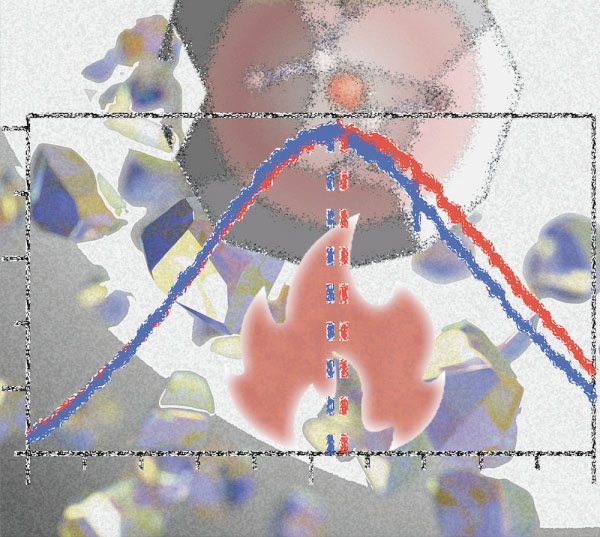| Jul 27, 2022 |
Nanodiamonds are a cell's best friend
(Nanowerk News) Nanodiamonds' repertoire of applications expands constantly, including everything from ultra-fine coatings to precise drug delivery.
|
|
Now, Kyoto University and Daicel Corporation have developed nanodiamonds to detect temperatures on the nanoscale inside cells and organelles (Carbon, "All-optical nanoscale thermometry based on silicon-vacancy centers in detonation nanodiamonds").
|
|
"The functions and activities of living cells will closely relate to the non-uniform temperature distribution and localized temperature changes within these biosystems," notes author Norikazu Mizuochi.
|
 |
| Linear red shift is observed with increasing temperature in detonated nanodiamonds with color centers. (Image: Norikazu Mizuochi, KyotoU)
|
|
Nanodiamonds with silicon-vacancy color centers, or SiV centers, are of a new generation that can detect temperature changes inside cells by gauging luminescence.
|
|
"The peak wavelength of the luminescence spectrum shifts linearly, which is mostly consistent with the spectral behavior of SiVs in bulk diamonds and shows us the possible future of all-optical nanoscale thermometry," says the author.
|
|
Alternatively, color-center-containing nanodiamonds, especially nitrogen-vacancy centers, demonstrate high-temperature sensitivity when using laser light and microwave irradiation, and are advantageous in biological applications for their low cytotoxicity and stable luminescence.
|
|
Typically, temperature-measurable nanoparticles are larger than 100 nm -- relatively massive in the nanoscale -- potentially damaging cells. Mizuochi's team, however, has succeeded in creating the smallest nanodiamond thermometry with a mean size of 20 nm, including other color centers such as NV centers. This nanoparticle enables smoother entry into organelles as well as temperature sensing to sub-kelvin precision.
|
|
"To investigate the temperature response of our polymer-coated and size-selected SiV-containing nanodiamonds, or SiV-DNDs, we used a temperature-controlled microscope to measure the luminescence spectrum of an array of SiV-DNDs," adds Mizuochi.
|
|
Combining this technology with multi-color imaging and improving temperature sensing by optimizing the number of SiV centers per particle are part of the next stage in the research team's development of high-precision nanodiamonds.
|

